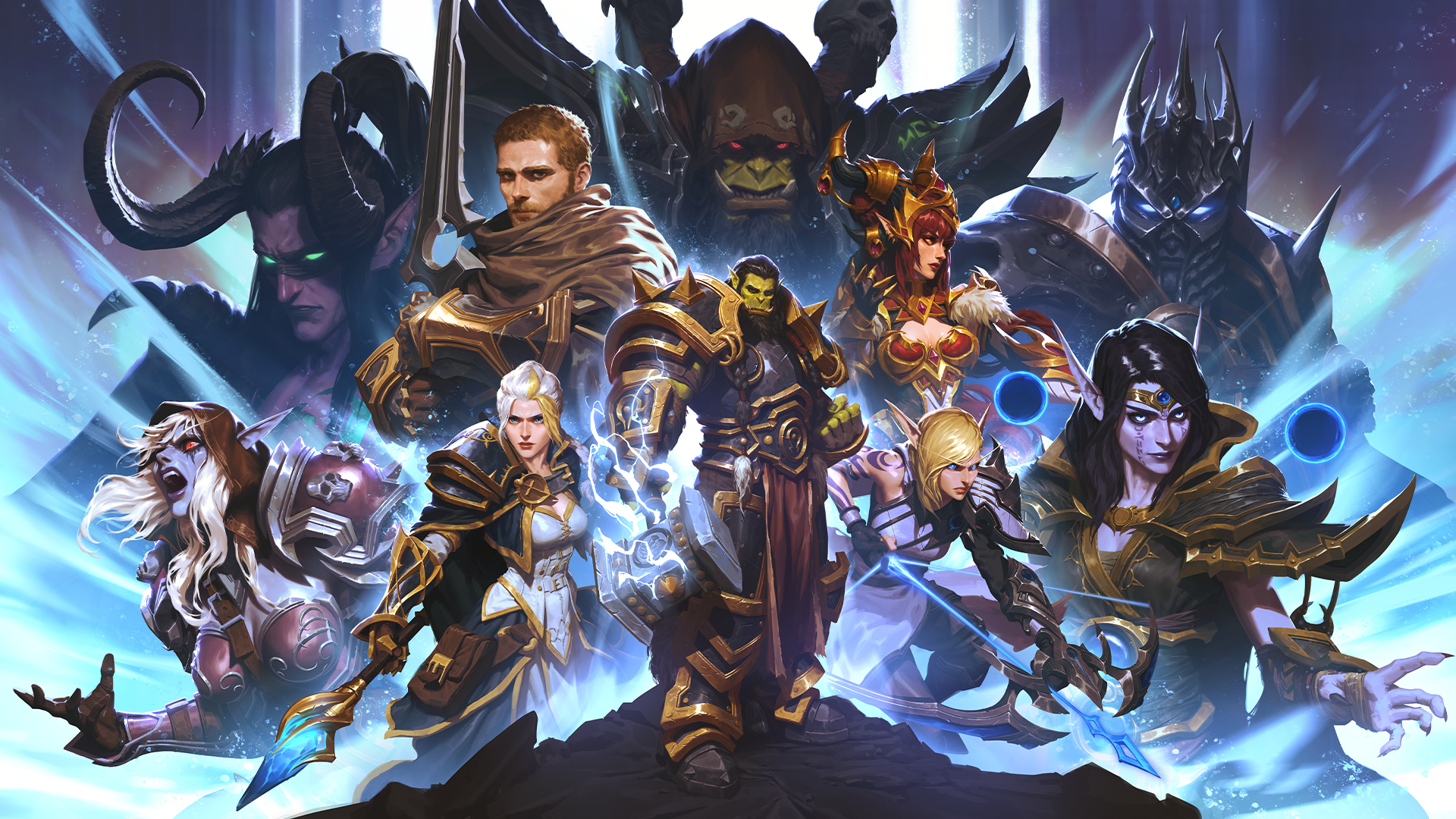Back in 2011, FromSoftware released a spiritual successor to its 2009 cult classic, Demon’s Souls. This new game, titled Dark Souls, was a tough sell: a punishing, hardcore RPG where players attempt to survive a haunting fantasy hellscape teeming with gruesome monsters that could eviscerate them in seconds. At the time, it was hard to imagine the team’s crushing new creation would become one of gaming's most revered modern franchises.
However, Dark Souls’ ruthlessly satisfying combat, brutal yet compelling boss encounters, and story-rich world transformed it into a global phenomenon, inspiring an entire genre of challenging RPGs that’s still thriving over a decade later. With FromSoftware’s work on the Dark Souls franchise now wrapped up, we’ve decided to break down every game and expansion in the trilogy, as well as offer new players a recommended starting point.
Jump to:
How Many Dark Souls Games and Expansions Are There?
Not including remasters or ports, there are three Dark Souls games and six expansions, with every release arriving on home consoles and PC.
Where’s the Best Place to Start?

For newcomers, picking a place to dive into the franchise is tricky. Some will suggest starting with the original Dark Souls, as it marked the beginning of the franchise and gives you a broad overview of what the series offers.
While Dark Souls 1 is a great place to start, from a gameplay standpoint, we'd recommend diving into Dark Souls 3 first. Although you can expect a steep learning curve at points, Dark Souls 3 is the simplest of the trilogy to pick up and play, with a more linear world to traverse and a series of early-game encounters that help you learn the ropes. It’s also the newest of the three Dark Souls games and, by extension, the smoothest to play.
That being said, if the lore of Dark Souls appeals to you, you're probably best jumping into the original game first. Dark Souls has a rich world and a deep story that you’ll uncover over time, and while each game largely stands on its own, some aspects of the lore are best experienced chronologically.
Every Dark Souls Game in Release Order
These blurbs contain mild spoilers for each game, including characters, settings, and story beats.
1. Dark Souls (2011)

Hitting shelves in 2011, FromSoftware followed up its work on Demon's Souls by releasing a spiritual successor titled Dark Souls. The game took place in the dour realm of Lordran, with players assuming the role of a hollowed warrior known as the Chosen Undead. Awakening in the desolate halls of the Undead Asylum, they’re given a quest: link the First Flame and continue the Age of Fire, preventing Lordran from plunging into darkness.
Escaping the Asylum, the Chosen Undead undertakes an adventure across the realm, battling through the onslaught of monstrosities and corrupted gods that call the haunting locale home. Players had to study their surroundings and create precise character builds in order to navigate its hopeless, punishing world. It demanded a lot from its audience, offering them challenging battles that felt genuinely rewarding to learn and master.
Whether it's enduring the perilous descent to the poisoned depths of Blighttown or overcoming the towering Ornstein and agile Smough, Dark Souls' seminal moments and approach to difficult but satisfying gameplay made it an instant classic.
2. Dark Souls: Artorias of the Abyss (2011)

Shortly after the release of the base game, FromSoftware released the first and only major expansion for the original Dark Souls: Artorias of the Abyss. Taking place during the events of the main campaign, it sees the Chosen Undead venture through a portal that sends them back in time. Arriving in the land of Oolacile, they must face an ancient and powerful new threat.
Alongside several bosses, including arguably the game’s toughest challenge, Manus, Father of the Abyss, Dark Souls: Artortias of the Abyss added a new area to explore and some powerful end-game gear, while also building significantly on the series’ lore.
3. Dark Souls 2 (2014)

Three years later, FromSoftware released the second entry in the Dark Souls trilogy, with Dark Souls 2 picking up the story thousands of years later. This time around, a new hollowed warrior known as the Bearer of the Curse takes center stage, journeying to the kingdom of Drangleic to dispel the undead curse afflicting them.
Their quest puts them on the trail of the long-missing King Vendrick, kick starting an adventure to track down Drangleic's former liege. Dark Souls 2 built off the original Dark Souls’ foundation in a number of ways, implementing changes to the respawn mechanic so enemies no longer return if you’ve killed them multiple times, fully overhauling the humanity system, and making fast travel available from the very beginning of the game.
4. Dark Souls 2: Crown of the Sunken King (2014)

The first of a three-part DLC slate for Dark Souls 2 known as The Lost Crowns, Crown of the Sunken King follows the Bearer of the Curse as they descend deep below Drangleic. There, they search for the titular Crown of the Sunken King.
The expansion provides an all-new labyrinthine underground area to explore, delivering a gauntlet of poison-inflicting enemies, hidden traps, environmental puzzles, and a handful of tough new bosses.
5. Dark Souls 2: Crown of the Old Iron King (2014)

The second entry in the Lost Crowns expansion trilogy, Crown of the Old Iron King sees the Bearer of the Curse explore a new area known as Brume Tower. Much like the last expansion, the protagonist’s goal is to track down an ancient crown, this time belonging to the titular Old Iron King.
To find the artifact, they’ll have to make their way past the tower’s defenses, battling a range of powerful fire-wielding foes while navigating precarious pathways and going toe-to-toe with another wave of hyper-challenging bosses.
6. Dark Souls 2: Crown of the Ivory King (2014)

The third and final entry in The Lost Crowns expansion trilogy, Crown of the Ivory King sends players to the icy kingdom of Eleum Loyce. There, they’re tasked with tracking down the final missing crown: the Crown of the Ivory King.
Exploring the ruins amidst a blizzard, players must fend off a range of frozen threats, contending with rival phantoms, hazardous environments, and, of course, a handful of challenging new bosses.
7. Dark Souls 3 (2016)

After the release of Bloodborne, FromSoftware returned to the Dark Souls franchise for its final entry: Dark Souls 3. Our story begins as, once again, the First Flame begins to fade, causing a hollowed undead by the title of Ashen One to rise and begin a quest to relink the flame.
To accomplish their mission, they must return the powerful Lords of Cinder to their thrones, launching the Ashen One on a perilous journey across the kingdom of Lothric. Acting as a finale to the series, Dark Souls 3 was the biggest Dark Souls game yet, with grander, more intense boss battles; some of the franchise's most visually and technically ambitious levels; and faster, more aggressive combat.
8. Dark Souls 3: Ashes of Ariandel (2016)

The first of two major expansions for Dark Souls 3, Ashes of Ariandel sees the player travel to the Painted World of Ariandel on a quest to fulfill a prophecy. There, they find a frost-covered world filled with danger.
Ashes of Ariandel unleashes a range of new threats on the player, as they explore fallen ruins while finding new gear, battling fierce endgame enemies, and tackling one of Dark Souls 3's hardest boss fights yet with Sister Friede and Father Ariandel.
9. Dark Souls 3: The Ringed City (2017)

The second and final expansion for Dark Souls 3, The Ringed City brings the Dark Souls series to a close. Exploring a distorted world of fallen kingdoms known as the Dreg Heap, players embark on an adventure through this haunting graveyard, setting up a climactic showdown against a corrupted foe.
The Ringed City delivered one final area for Dark Souls veterans to test their mettle, pitting them against brutal, high-level enemies who offered powerful endgame gear and delivered some of the trilogy's most challenging boss encounters.
What’s Next for Dark Souls?
As it currently stands, Dark Souls as a franchise is officially complete. Series creator Hidetaka Miyazaki has reiterated that FromSoftware is done with the series multiple times, although told us in an interview back in 2016 that its conclusion “doesn't necessarily mean [we’re] not going to work on a Dark Souls-like game.”
We saw Miyazaki's words come to fruition six years later, with FromSoftware releasing a spiritual successor to the series, Elden Ring, in 2022. Last year, we learned that Elden Ring will be receiving a major expansion in the near future, with FromSoftware announcing that an add-on titled The Shadow of the Erdtree is in development.
Callum Williams is a freelance media writer with years of experience as a game critic, news reporter, guides writer and features writer.








